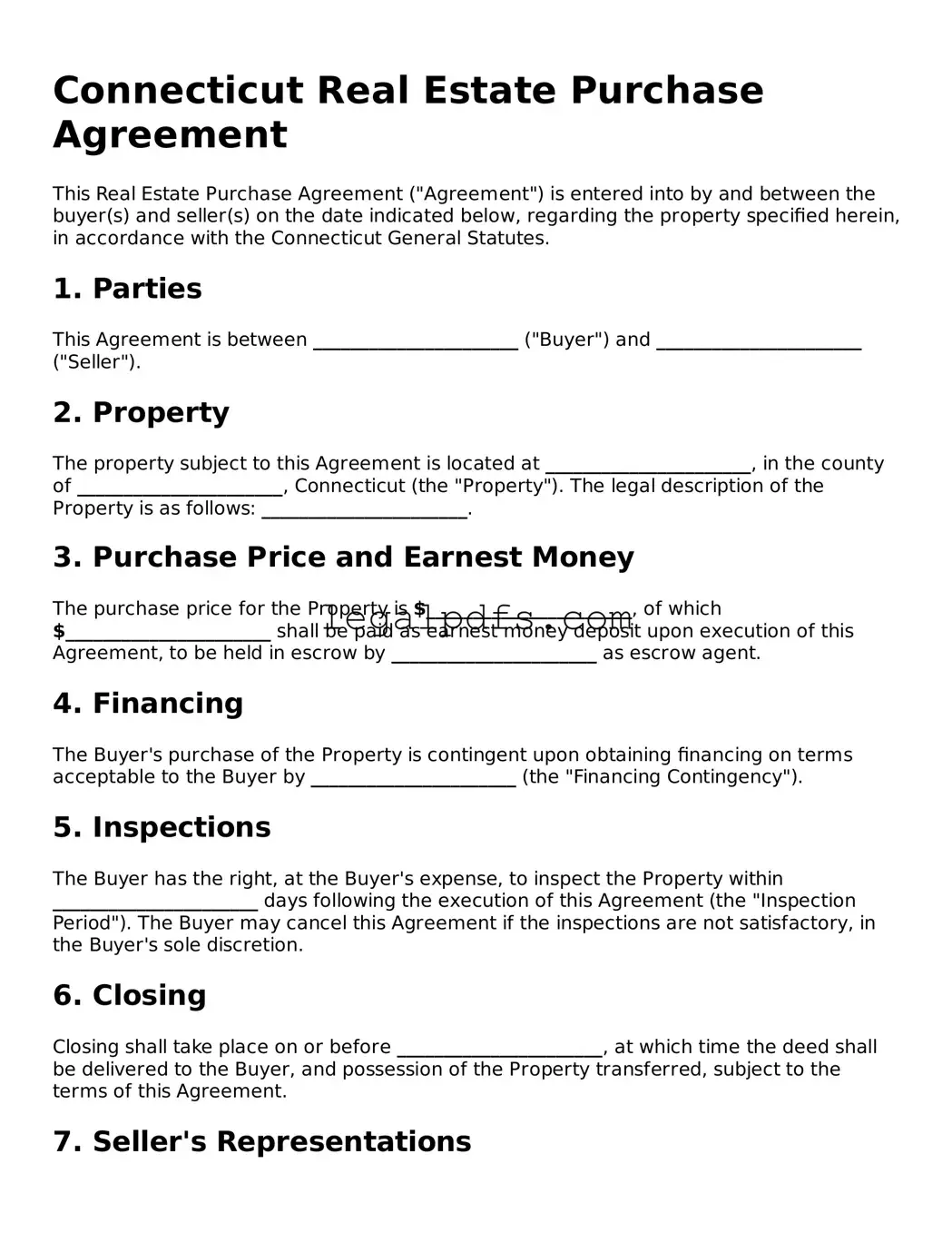Connecticut Real Estate Purchase Agreement
This Real Estate Purchase Agreement ("Agreement") is entered into by and between the buyer(s) and seller(s) on the date indicated below, regarding the property specified herein, in accordance with the Connecticut General Statutes.
1. Parties
This Agreement is between ______________________ ("Buyer") and ______________________ ("Seller").
2. Property
The property subject to this Agreement is located at ______________________, in the county of ______________________, Connecticut (the "Property"). The legal description of the Property is as follows: ______________________.
3. Purchase Price and Earnest Money
The purchase price for the Property is $______________________, of which $______________________ shall be paid as earnest money deposit upon execution of this Agreement, to be held in escrow by ______________________ as escrow agent.
4. Financing
The Buyer's purchase of the Property is contingent upon obtaining financing on terms acceptable to the Buyer by ______________________ (the "Financing Contingency").
5. Inspections
The Buyer has the right, at the Buyer's expense, to inspect the Property within ______________________ days following the execution of this Agreement (the "Inspection Period"). The Buyer may cancel this Agreement if the inspections are not satisfactory, in the Buyer's sole discretion.
6. Closing
Closing shall take place on or before ______________________, at which time the deed shall be delivered to the Buyer, and possession of the Property transferred, subject to the terms of this Agreement.
7. Seller's Representations
The Seller represents that the Property is free of liens and encumbrances, except as disclosed herein, and that the Seller has the right to sell the Property.
8. State Specific Provisions
In accordance with the Connecticut General Statutes, the Seller is required to complete a Residential Property Condition Disclosure Report and deliver it to the Buyer.
9. Miscellaneous
- This Agreement constitutes the entire agreement between the parties concerning the subject matter hereof and supersedes all prior agreements, representations, and understandings of the parties.
- Any amendments to this Agreement must be in writing and signed by both parties.
- This Agreement shall be governed by and construed in accordance with the laws of the State of Connecticut.
10. Signatures
This Agreement was executed on the date written below:
Date: ______________________
Buyer's Signature: ______________________
Seller's Signature: ______________________
